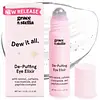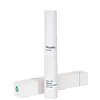What's inside
What's inside
 Key Ingredients
Key Ingredients

 Benefits
Benefits

 Concerns
Concerns

 Ingredients Side-by-side
Ingredients Side-by-side

Water
Skin ConditioningGlycerin
HumectantPropylene Glycol
HumectantErythritol
HumectantGlycereth-26
HumectantNiacinamide
SmoothingPhenoxyethanol
PreservativeHydroxyethylcellulose
Emulsion StabilisingGlycyrrhiza Uralensis Root Extract
Skin ConditioningCaffeine
Skin ConditioningCyclodextrin
AbsorbentPaeonia Suffruticosa Root Extract
Skin ProtectingPortulaca Oleracea Flower/Leaf/Stem Extract
AntioxidantChrysanthellum Indicum Extract
Skin ConditioningChlorphenesin
AntimicrobialPhaseolus Radiatus Seed Extract
Skin ConditioningDisodium EDTA
Retinyl Palmitate
Skin ConditioningSodium Hyaluronate
Humectant1,2-Hexanediol
Skin ConditioningTocopherol
AntioxidantDisodium Phosphate
BufferingPolysorbate 60
EmulsifyingEthylhexylglycerin
Skin ConditioningSodium Phosphate
BufferingAcetyl Hexapeptide-8
HumectantWater, Glycerin, Propylene Glycol, Erythritol, Glycereth-26, Niacinamide, Phenoxyethanol, Hydroxyethylcellulose, Glycyrrhiza Uralensis Root Extract, Caffeine, Cyclodextrin, Paeonia Suffruticosa Root Extract, Portulaca Oleracea Flower/Leaf/Stem Extract, Chrysanthellum Indicum Extract, Chlorphenesin, Phaseolus Radiatus Seed Extract, Disodium EDTA, Retinyl Palmitate, Sodium Hyaluronate, 1,2-Hexanediol, Tocopherol, Disodium Phosphate, Polysorbate 60, Ethylhexylglycerin, Sodium Phosphate, Acetyl Hexapeptide-8
 Reviews
Reviews

Alternatives
Ingredients Explained
These ingredients are found in both products.
Ingredients higher up in an ingredient list are typically present in a larger amount.
Caffeine is most associated with coffee, tea, and cacao. In skincare, it helps with calming inflammation and is rich in antioxidants.
While caffeine is used to treat cellulite and and dark circles, further studies are needed to prove this. It has been believed to help with these skin conditions due to its ability to dilate blood vessels and increase blood flow.
Some studies are looking into caffeine's ability to protect against UV rays.
Learn more about CaffeineNiacinamide is a multitasking form of vitamin B3 that strengthens the skin barrier, reduces pores and dark spots, regulates oil, and improves signs of aging.
And the best part? It's gentle and well-tolerated by most skin types, including sensitive and reactive skin.
You might have heard of "niacin flush", or the reddening of skin that causes itchiness. Niacinamide has not been found to cause this.
In very rare cases, some individuals may not be able to tolerate niacinamide at all or experience an allergic reaction to it.
If you are experiencing flaking, irritation, and dryness with this ingredient, be sure to double check all your products as this ingredient can be found in all categories of skincare.
When incorporating niacinamide into your routine, look out for concentration amounts. Typically, 5% niacinamide provides benefits such as fading dark spots. However, if you have sensitive skin, it is better to begin with a smaller concentration.
When you apply niacinamide to your skin, your body converts it into nicotinamide adenine dinucleotide (NAD). NAD is an essential coenzyme that is already found in your cells as "fuel" and powers countless biological processes.
In your skin, NAD helps repair cell damage, produce new healthy cells, support collagen production, strengthen the skin barrier, and fight environmental stressors (like UV and pollution).
Our natural NAD levels start to decline with age, leading to slower skin repair, visible aging, and a weaker skin barrier. By providing your skin niacinamide, you're recharging your skin's NAD levels. This leads to stronger, healthier, and younger looking skin.
Another name for vitamin B3 is nicotinamide. This vitamin is water-soluble and our bodies don't store it. We obtain Vitamin B3 from either food or skincare. Meat, fish, wheat, yeast, and leafy greens contain vitamin B3.
The type of niacinamide used in skincare is synthetically created.
Learn more about Niacinamide